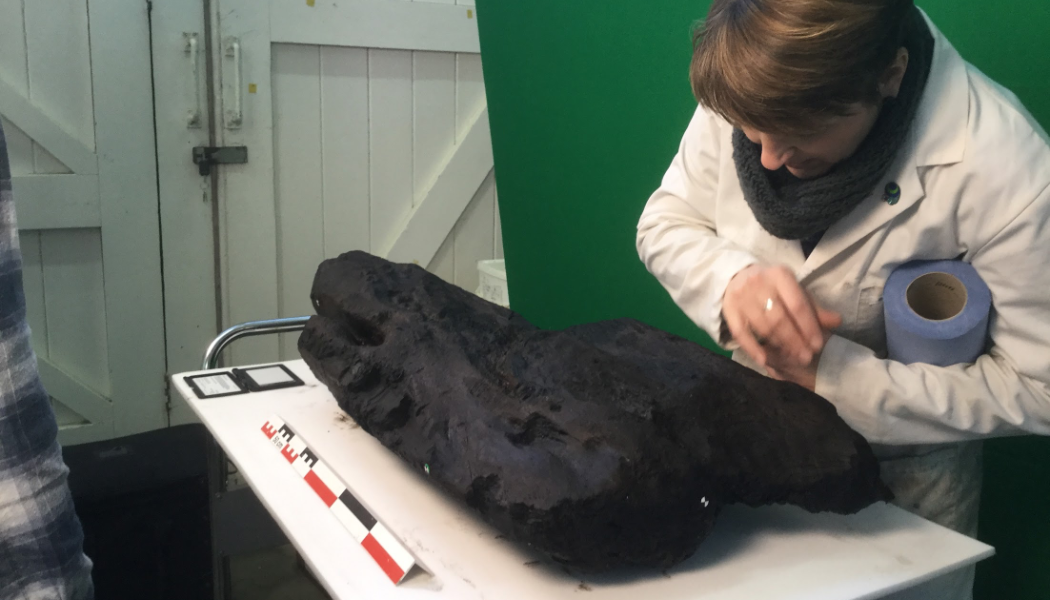A large piece of carved wood, discovered by chance in Berkshire, has been identified by Historic England as being more than 6,000 years old – making it the oldest carved wood in Britain.
The timber was carved 2,000 years before Stonehenge was built and 4,500 years before the Romans came to Britain. It is 500 years older than the only other known decoratively carved timber in Britain discovered near Maerdy in Wales which dates to the Late Mesolithic/Early Neolithic period (4270 BC – 4000 BC).
It was discovered in Boxford in Berkshire lying in peat, during the construction of a workshop, around five feet below the surface. Historic England said the peat might have helped the organic material survive due to a lack of oxygen within the peat.
Landowner, Derek Fawcett was among those present during its discovery.
“It was a rather surprising find at the bottom of a trench dug for foundations for a new building,” Fawcett said.
“After hosing it down, we saw that it had markings that appeared unnatural and possibly man-made. I have been working with Historic England and the Boxford History Project since I found it, now over four years ago, while radiocarbon dating of the wood was carried out.”
Fawcett has donated the timber to the West Berkshire Museum in Newbury where it will eventually go on display. The museum is also working with the Boxford History Project to arrange for the timber to go on loan to the Boxford village heritage centre.
Janine Fox, Curator at West Berkshire Museum said: “This is a brilliant find and we are very excited at the prospect of displaying this incredible artefact at the Museum, although it won’t be ready to show for some time yet.
“Further study may reveal more about the markings on the oak and its context, but its unearthing gives us perspective on the long rich heritage of West Berkshire, and a tangible link to humans who lived in this area long before any towns and villages had been created.”

After being notified of the find in 2019, West Berkshire Council’s archaeologist Sarah Orr contacted Historic England for expert advice. It is now being conserved at Historic England’s science facility in Fort Cumberland in Portsmouth.
Experts from Historic England, working with scientists from Nottingham Tree-ring Dating Laboratory and The Centre for Isotope Research, University of Groningen, carried out radiocarbon dating of a timber slice from the wood which was dissected into individual tree-rings. The data shows there is a 95% probability that this piece of wood dates to 4640 BC – 4605 BC.
Duncan Wilson, Chief Executive of Historic England said the find has “helped to shine new light on our distant past and we’re grateful to the landowner for recognising its significance.”










